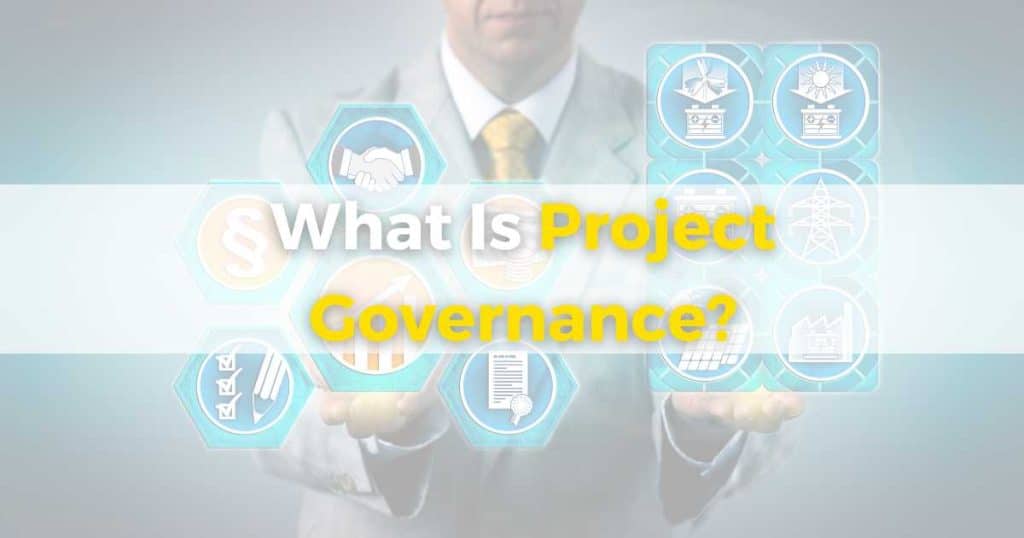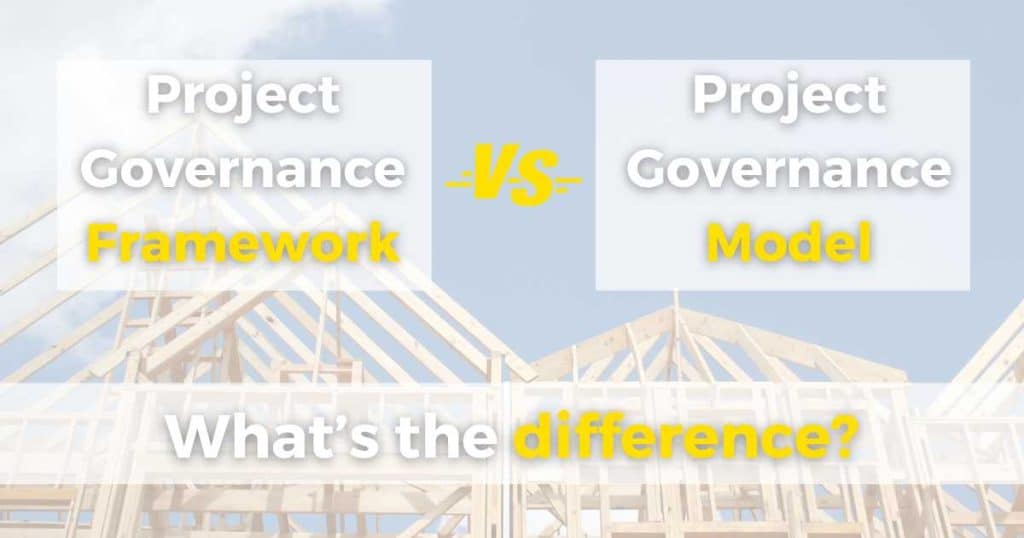In this guide, I’ll explain what project governance is in project management and its key components, benefits, and implementation strategies.
If you’re not quite sure what project governance is, you’ve come to the right place!
Despite what some may think, project management and project governance are actually two different things.
If this is you, don’t worry! I’ve got you covered.
Whether you’re a small business owner, project manager, or stakeholder, this comprehensive project governance guide is for you!
Read more: My Top 7 Project Management Software.
What is Project Governance?

In the dynamic world of project management, it is essential to have robust governance practices in place.
Why? To ensure the successful execution of projects! After all, that’s the goal, right?
Project governance is essentially a framework that guides decision-making, ensures accountability, and facilitates effective communication throughout the project lifecycle.
Basically, project governance plays a vital role in outlining the regulations, guidelines, and policies that govern and supervise project execution.
Additionally, project governance includes:
- Establishing the metrics to evaluate project success.
- Monitoring and managing risks and issues.
- Staying on top of regulatory requirements and standards compliance.
- Managing stakeholders.
Typically, the Project Management Office (PMO) establishes and defines an organization’s project governance framework.
Project Governance Key Aspects
It’s worth mentioning that every project and organization is different. Therefore, there is not a one-size-fits-all approach to project governance.
However, generally speaking, it includes the following key aspects:
- Policies and Procedures: To aid project managers in successfully planning, executing, and delivering projects.
- Regulations: To ensure adherence to relevant laws and regulations.
- Functions: Include planning, organizing, staffing, and controlling.
- Processes: Project initiation, planning, execution, monitoring, etc.
- Responsibilities: The ability to take ownership, provide direction, demonstrate leadership, and manage individual tasks or teams to ensure project success.
What Are The Three Pillars Of Project Governance?
Project governance is built upon three fundamental pillars that define and shape the concept of project governance.
Let’s take a closer look at each pillar now:
Structure
Did you know that successful projects and project governance depend on the support and involvement of the entire organization?
That’s right! Despite what you may think, the structure of project governance extends beyond the project team. Actually, the whole company should get involved!
Senior management should establish the project’s vision and structure and then pass that down to the project managers to ensure the vision is followed all the way to the end.
People
In order to have efficient project governance, you must have skilled project managers who comprehensively understand the projects’ goals (and the roadmap for getting there).
This is where project governance comes into play. The project goals must be clear, feasible, and sustainable so that project managers can follow them easily.
Information
If you want your project to be successful, listen up! Of course, you need goals and visions.
But you’re much more likely to fail if you don’t have open and consistent communication within your team, right?
Regular reporting, meetings, and open communication channels ensure the project remains on track for a successful outcome.
Project Governance Roles
Now that you know what project governance is, let’s explore the key roles that drive it!
There are many roles within project governance, but there are three critical roles you should be aware of.
Project Owner
The project owner represents the organization and oversees the project manager.
While they’re often separate from the project manager, this role is vital in providing strategic direction for the project.
Key Stakeholders
The project board comprises the key stakeholders (people who are invested in the project) and typically includes project funders, end-users, or suppliers.
I recommend limiting the number of key stakeholders to a manageable size (ideally no more than six).
Advisory Group
If you do happen to have many stakeholders, I advise forming an advisory group!
Unlike the project board, the advisory group does not make day-to-day decisions but offers guidance and support for larger project issues.
Project Governance Framework vs Project Governance Model

I’ve already mentioned that the project governance ‘Framework’ is a set of guidelines or processes to execute projects.
And although the project governance ‘Framework’ and ‘Model’ are sometimes used interchangeably, they actually serve different purposes!
The project governance model synchronizes the decision-making structures, operating procedures, and collaborative processes within the framework.
Basically, the project governance framework provides the guidelines, and the project governance model implements those guidelines to create a structure that aligns with the project’s needs and objectives.
How To Use A Project Governance Model?
So, with that said, how can you effectively implement a project governance model tailored to your organization’s needs?
Follow the steps below to find out:
- Identify the stakeholders involved in your project.
- Select and prioritize your business goals or strategic objectives specific to your company and customers.
- Establish realistic, transparent, and result-oriented processes.
- Select the right people for the correct responsibilities and jobs.
- Equip project contributors with the necessary tools to enhance their efficiency.
- Identify, address, and eliminate any bottlenecks that may hinder progress.
- Maintain clear and effective communication throughout the project.
By following these easy-to-follow steps, you can build and utilize a project governance model that suits you and your organizational requirements!
Project Governance vs Project Management

While project governance and management aid in the success of projects and organizations, it’s important to note their differences.
Although different, project governance and project management complement each other and have the same goal – to ensure the success of projects and organizations!
Project governance provides the framework within which project management operates, and project management is the tactical implementation of that framework.
So, while project management involves planning, organizing, and executing projects, project governance handles the oversight and guidance of the project management process.
The scope and focus of the two are different:
- Project management is tactical, focusing on the day-to-day details of the project.
- Project governance is strategic, focusing on aligning the project with the organization’s goals and objectives.
Why Is Project Governance Important?
Project governance is essential as it guides, directs, and drives the project management team to plan, execute, and effectively measure their projects.
Basically, it sets the standards for project planning, communication, execution, and evaluation, ensuring that all project decisions align with your goals and policies!
By understanding the roles and influence of project governance in project management, you should be able to understand project management responsibilities deeply.
Stews Final Thoughts
And that brings me to the end of this comprehensive article on project governance.
I hope you can now identify what project governance is and how it can help you steer your projects in the right direction!
No matter how big or small your business or projects are, I believe it’s imperative for the project management team to operate within the project governance framework.
Project governance can help your team stay on track with organizational goals and policies.
Additionally, it helps foster accountability throughout the project lifecycle, ultimately leading to the results you hope to achieve!

